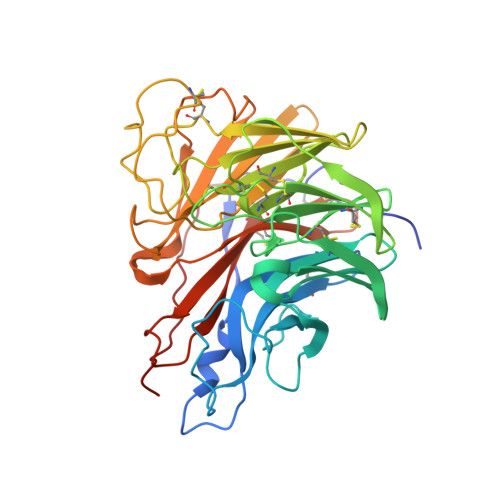Structural and Functional Basis of Resistance to Neuraminidase Inhibitors of Influenza B Viruses.
Oakley, A.J., Barrett, S., Peat, T.S., Newman, J., Streltsov, V.A., Waddington, L., Saito, T., Tashiro, M., McKimm-Breschkin, J.L.(2010) J Med Chem
- PubMed: 20695427
- DOI: https://doi.org/10.1021/jm100621s
- Primary Citation of Related Structures:
3K36, 3K37, 3K38, 3K39, 3K3A - PubMed Abstract:
We have identified a virus, B/Perth/211/2001, with a spontaneous mutation, D197E in the neuraminidase (NA), which confers cross-resistance to all NA inhibitors. We analyzed enzyme properties of the D197 and E197 NAs and compared these to a D197N NA, known to arise after oseltamivir treatment. Zanamivir and peramivir bound slowly to the wild type NA, but binding of oseltamivir was more rapid. The D197E/N mutations resulted in faster binding of all three inhibitors. Analysis of the crystal structures of D197 and E197 NAs with and without inhibitors showed that the D197E mutation compromised the interaction of neighboring R150 with the N-acetyl group, common to the substrate sialic acid and all NA inhibitors. Although rotation of the E275 in the NA active site occurs upon binding peramivir in both the D197 and E197 NAs, this does not occur upon binding oseltamivir in the E197 NA. Lack of the E275 rotation would also account for the loss of slow binding and the partial resistance of influenza B wild type NAs to oseltamivir.
- CSIRO Materials Science and Engineering, Parkville, 343 Royal Parade, Parkville, Victoria, 3052, Australia.
Organizational Affiliation:



















